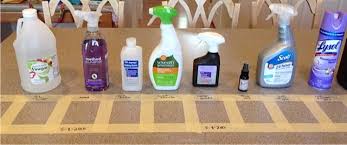
Breaking News
 Brighteon Broadcast News, Jan 7, 2026 - Doctors Replaced by AI...
Brighteon Broadcast News, Jan 7, 2026 - Doctors Replaced by AI...
 US Blockade Of Venezuela Triggers New Spike In Silver Price!
US Blockade Of Venezuela Triggers New Spike In Silver Price!
 Elon Musk Expects True AGI in 2026-2027 and Superintelligence About 2030...
Elon Musk Expects True AGI in 2026-2027 and Superintelligence About 2030...
 They Can't Stop The Unstoppable Rise Of Silver...
They Can't Stop The Unstoppable Rise Of Silver...
Top Tech News
 The First Production All-Solid-State Battery Is Here, And It Promises 5-Minute Charging
The First Production All-Solid-State Battery Is Here, And It Promises 5-Minute Charging
 See inside the tech-topia cities billionaires are betting big on developing...
See inside the tech-topia cities billionaires are betting big on developing...
 Storage doesn't get much cheaper than this
Storage doesn't get much cheaper than this
 Laser weapons go mobile on US Army small vehicles
Laser weapons go mobile on US Army small vehicles
 EngineAI T800: Born to Disrupt! #EngineAI #robotics #newtechnology #newproduct
EngineAI T800: Born to Disrupt! #EngineAI #robotics #newtechnology #newproduct
 This Silicon Anode Breakthrough Could Mark A Turning Point For EV Batteries [Update]
This Silicon Anode Breakthrough Could Mark A Turning Point For EV Batteries [Update]
 Travel gadget promises to dry and iron your clothes – totally hands-free
Travel gadget promises to dry and iron your clothes – totally hands-free
 Perfect Aircrete, Kitchen Ingredients.
Perfect Aircrete, Kitchen Ingredients.
 Futuristic pixel-raising display lets you feel what's onscreen
Futuristic pixel-raising display lets you feel what's onscreen
 Cutting-Edge Facility Generates Pure Water and Hydrogen Fuel from Seawater for Mere Pennies
Cutting-Edge Facility Generates Pure Water and Hydrogen Fuel from Seawater for Mere Pennies
Bleach, Hand Sanitizer, or Natural Cleaning Products? What to Use When

There's always a ferocious debate among people who swear by bleach, hand sanitizer, or natural cleaning products. But the fact is, there's no black and white answer. There are times and places for each of these.
Staying clean is a critical part of staying healthy. We have a wide array of disinfectants and cleaning products to stock up on. This guide takes the most common disinfectants, breaks down their pros and cons, and sorts out how and when to use each item.
Staying clean becomes even more important when access to medical care is not guaranteed, such as during or post-disaster. Therefore, we need to know to know how to remove pathogens from surfaces and fabrics.
Cleanliness Is Not Optional
Good hygiene and good household cleaning habits are essential to good health. While exposure to certain bacteria is good for us, even necessary for good health, there are also harmful microorganisms that can make use very sick. Some of them can live a surprisingly long time outside of the body.
For example:
MRSA is frequently spread via unwashed hands and bed linens.
Salmonella can live on surfaces for up to four weeks.
E. coli was shown to survive for a month on most metal surfaces.
While we always knew that Influenza was spread by coughing and sneezing, it has now been shown to be spread simply by breathing. Influenza can live for several hours airborne and 48 hours on hard surfaces.
Hepatitis can live anywhere from 4 days to several months outside the body, depending on the type.
One of the scariest viruses, Human Immunodeficiency Virus (HIV) doesn't live or reproduce outside the human body. However, given the right conditions, HIV can survive outside of the body in blood droplets up to several weeks, though no cases have ever been linked to exposure to blood spills.



